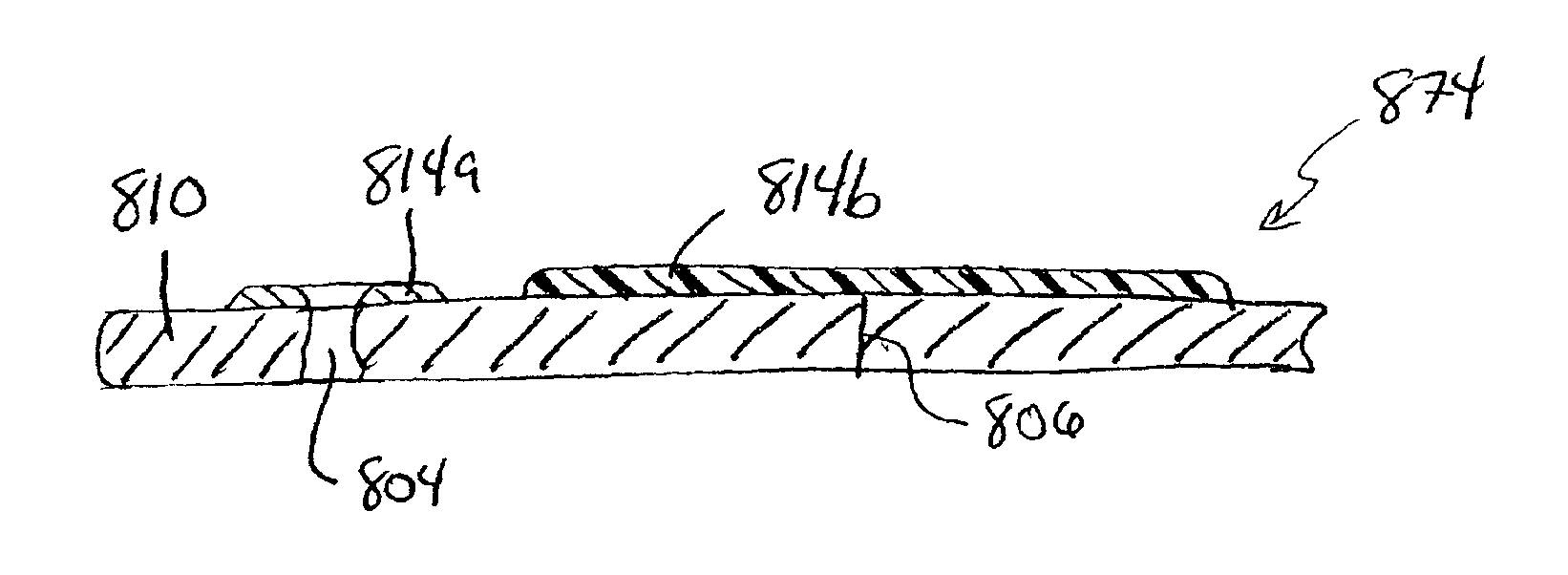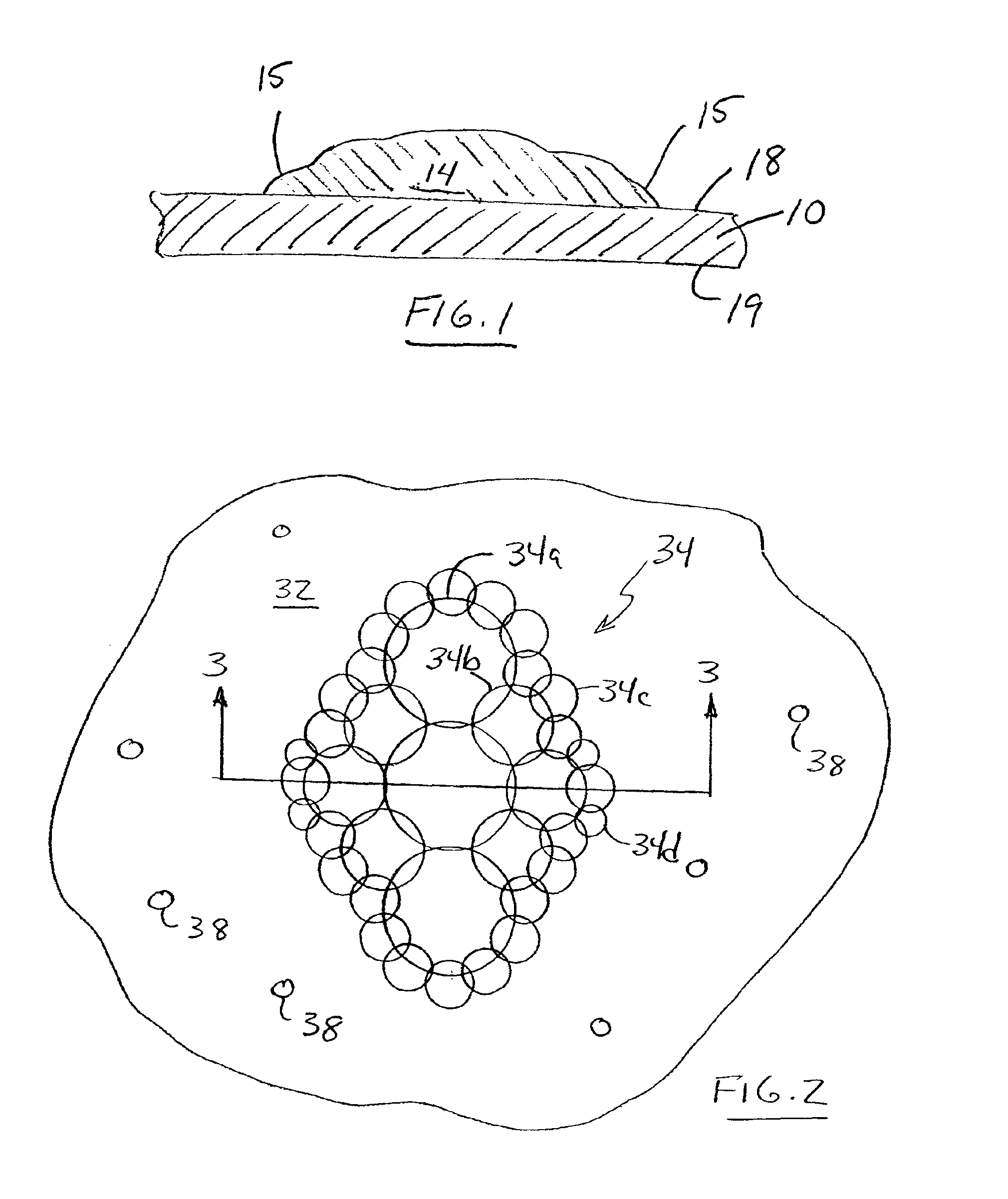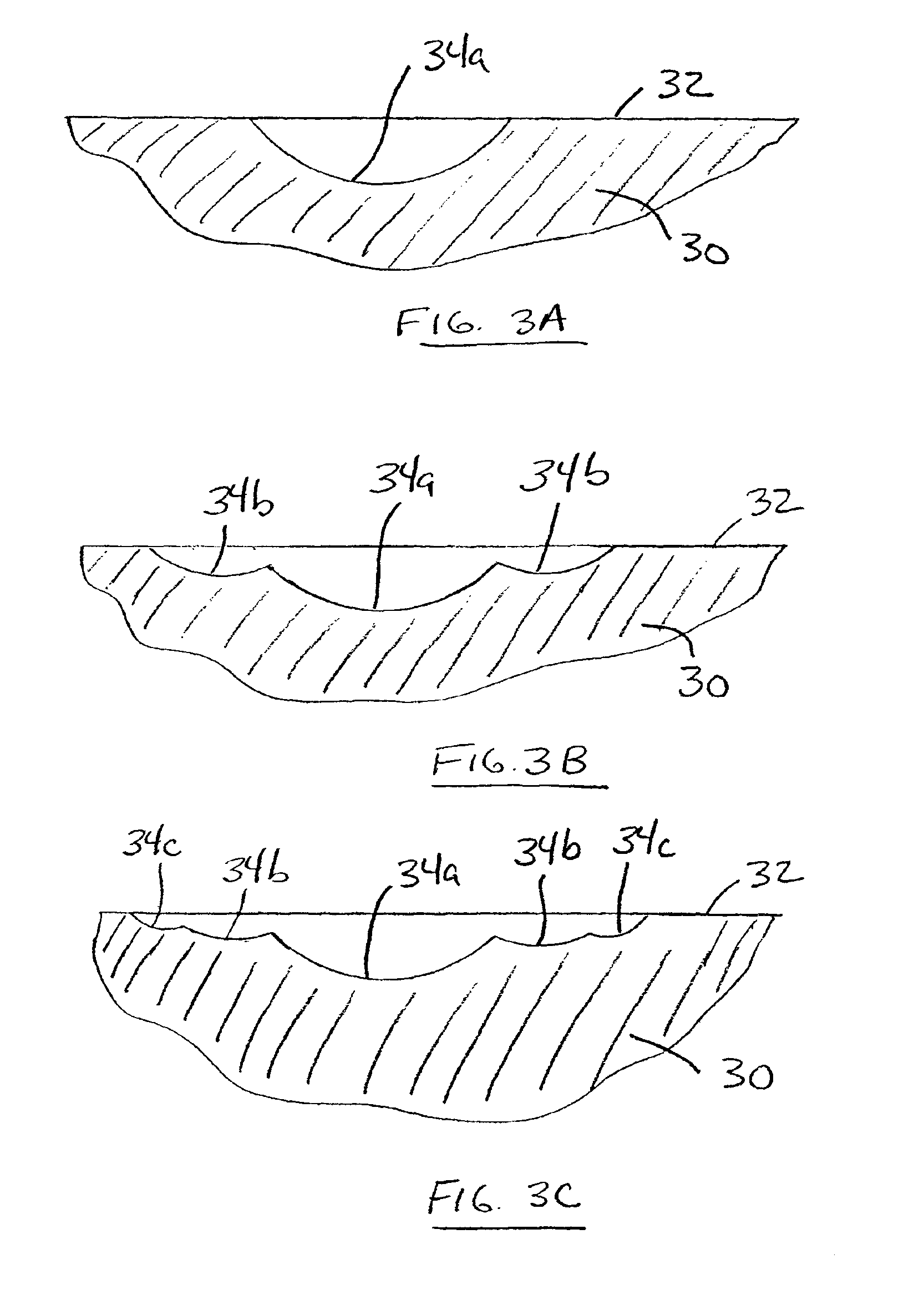Composite webs with reinforcing polymeric regions and elastic polymeric regions
a technology of elastic polymer and composite web, applied in the field of composite web, can solve the problems of reducing the breathability of the web, adding cost and weight to the web, and reducing the stiffness over the entire surface of the web, so as to improve the formation of reinforcing discrete polymeric regions and improve the transfer of relatively large discrete polymeric regions
- Summary
- Abstract
- Description
- Claims
- Application Information
AI Technical Summary
Benefits of technology
Problems solved by technology
Method used
Image
Examples
example
The following example is provided to enhance understanding of the present invention. The example is not intended to limit the scope of the invention.
To demonstrate that two different polymers can be used to produce both an elastic region and a reinforcing region on two different substrates followed by lamination, a web was prepared using the apparatus shown in FIG. 11, except a second transfer roll, similar to the transfer roll 30, a second rubber backup roll, similar to the rubber backup roll 20, a second doctor blade, similar to the doctor blade 42, and a second hot wire, similar to the hot wire 44, were used to transfer a discrete reinforcing polymer region to a second nonwoven substrate (SONTARA 8001 spunlaced polyester, Dupont). KRATON G-1657 SEBS block copolymer was used as the molten polymer for delivery to transfer roll 30 at a melt temperature of 246° C. using a 40 mm twin screw extruder. SONTARA 8001 spunlaced polyester (Dupont) was used as the substrate 10.
Transfer roll 3...
PUM
| Property | Measurement | Unit |
|---|---|---|
| Length | aaaaa | aaaaa |
| Elastomeric | aaaaa | aaaaa |
| Width | aaaaa | aaaaa |
Abstract
Description
Claims
Application Information
 Login to View More
Login to View More - R&D
- Intellectual Property
- Life Sciences
- Materials
- Tech Scout
- Unparalleled Data Quality
- Higher Quality Content
- 60% Fewer Hallucinations
Browse by: Latest US Patents, China's latest patents, Technical Efficacy Thesaurus, Application Domain, Technology Topic, Popular Technical Reports.
© 2025 PatSnap. All rights reserved.Legal|Privacy policy|Modern Slavery Act Transparency Statement|Sitemap|About US| Contact US: help@patsnap.com



